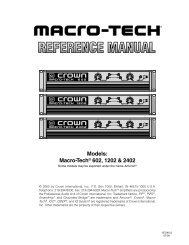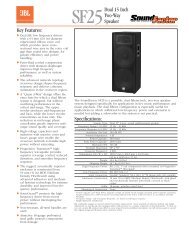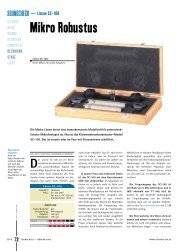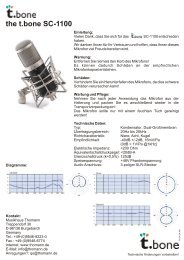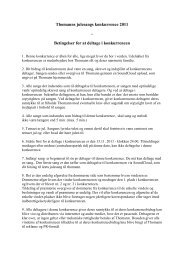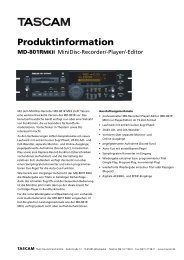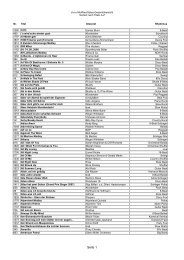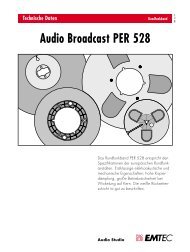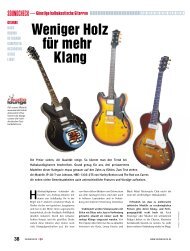You also want an ePaper? Increase the reach of your titles
YUMPU automatically turns print PDFs into web optimized ePapers that Google loves.
with a wide array of working methods. For example, some people will not want to<br />
bother with programming in or playing the MIDI notes so the Respond to Song Start,<br />
Auto Groove Repeat, Auto Bundle Shuffle and Auto Fill options are present, making<br />
BFD function as a no-nonsense auto-accompaniment unit which happily plays<br />
along at the host tempo while you compose without requiring any MIDI input.<br />
Humanization…<br />
BFD’s intelligent humanization system offers a great deal of control over the ‘feel’<br />
of Grooves. First of all, the supplied Grooves have been recorded using professional<br />
session drummers playing an electronic drumkit. With the natural swing<br />
and shuffle of the drummer to offer a great deal of natural swing and shuffle,<br />
resulting in drumloops which sound as much like a real drummer as possible. The<br />
Quantization panel allows you to manipulate the feel of the Grooves to your requirements.<br />
Firstly, you can ‘roll off’ the amount of natural feel in the Grooves by varying the<br />
Hard Quantize slider. One of the ways in which BFD’s Grooves achieve their realistic<br />
feel is by playing certain notes slightly before or after ‘where they should be’,<br />
in terms of a hard-quantized, robotic drumbeat. The Hard Quantize slider gradually<br />
moves early or late notes back to strict beat divisions: in other words, making the<br />
feel tighter.<br />
BFD also has a Swing function which works alongside the Hard Quantize. You<br />
can regard the concept of Swing in BFD as a similar one to ‘groove templates’<br />
in sequencers such as Cubase or Logic, which apply a quantization template to<br />
MIDI sequences. BFD ‘s Swing Templates operate by applying a timing template<br />
(chosen via the Template drop-down) over the Groove, which is varied by the<br />
Swing slider. It is applied after the Hard Quantize function, so that the central point<br />
of the Swing slider - i.e. when none of the Swing Template is applied - is the end<br />
result of the Hard Quantize function.<br />
To better understand this, use one of the funkier Grooves, for example those<br />
contained within one of the funk bundles. Move the Hard Quantize slider to the<br />
maximum. You should hear that the timing becomes more rigid and ‘robotic’. Now<br />
move the Swing slider (there is always a Swing Template loaded by default). You<br />
will notice that the timing becomes more syncopated again, but in a more uniform<br />
27



